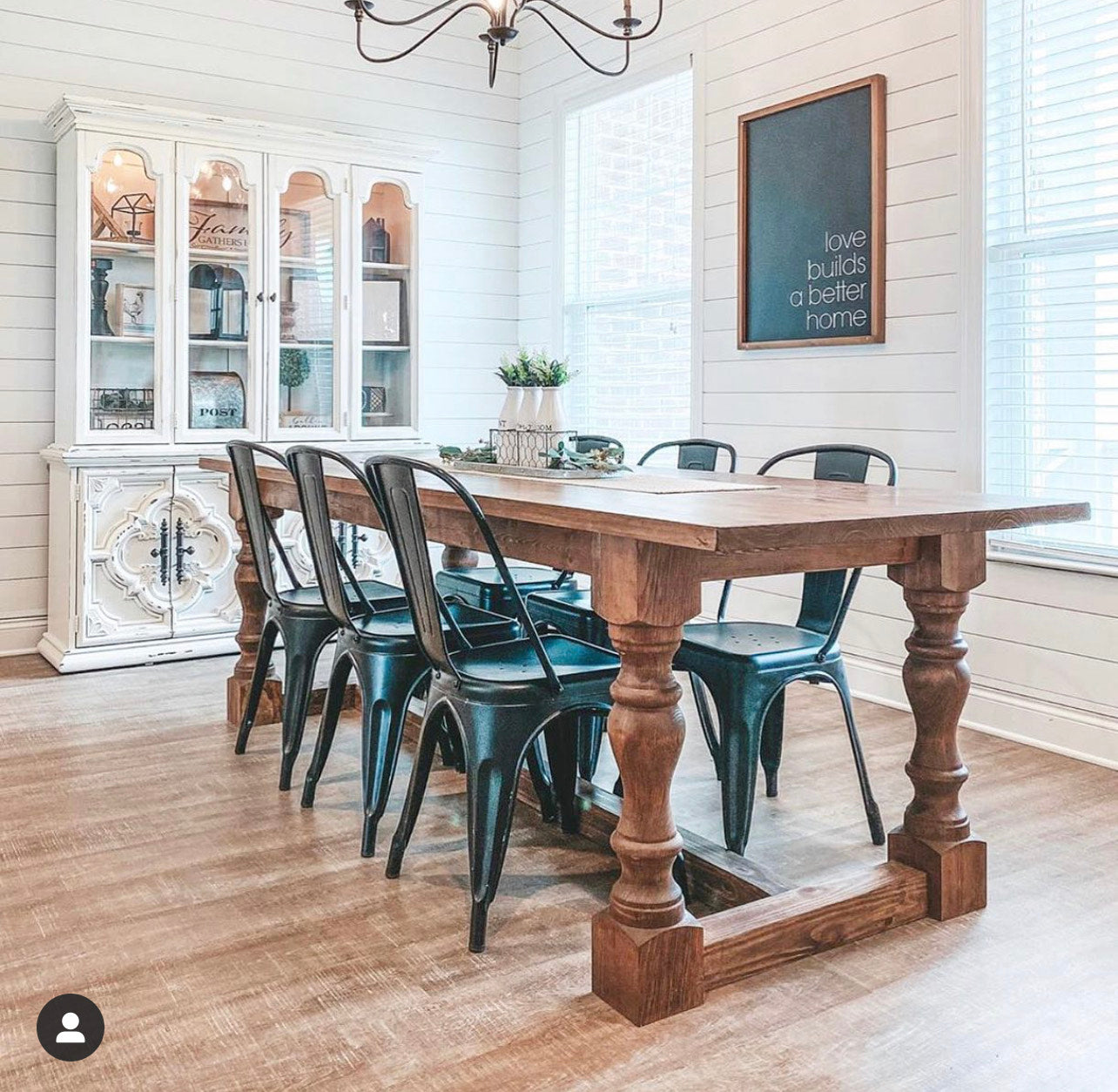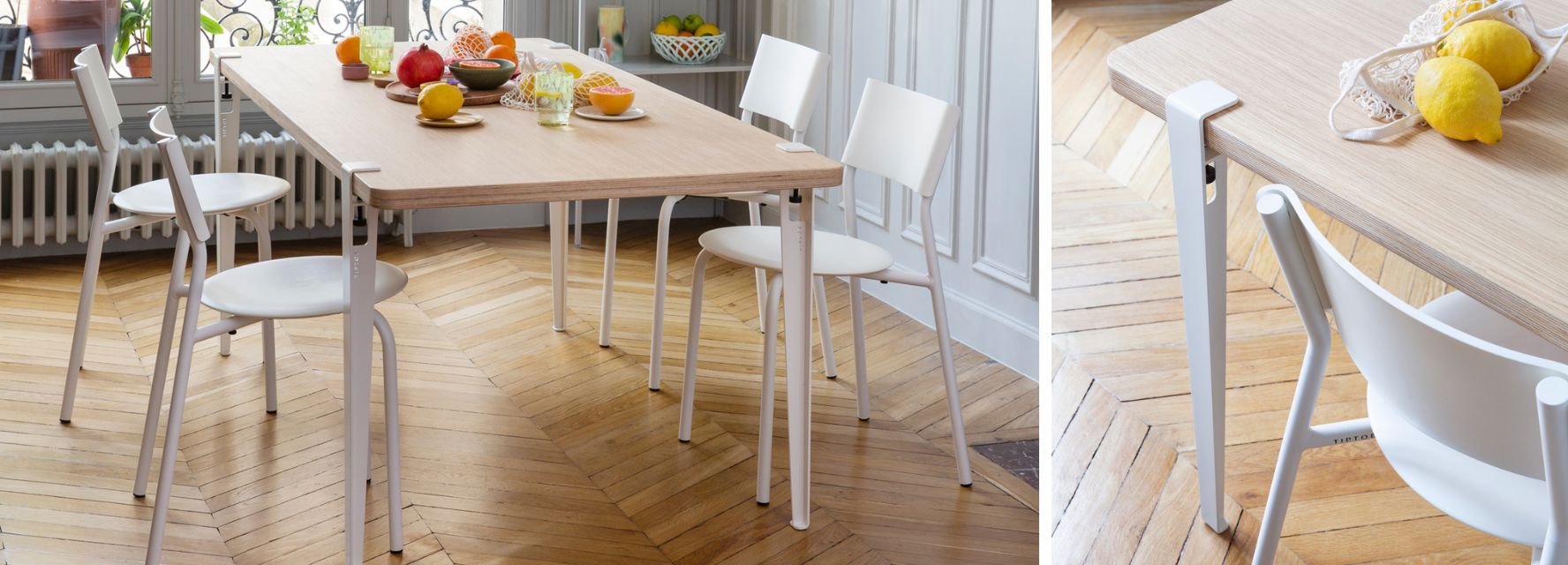Transform Your Dining Space with Stylish Dining Room Table Legs
Transform Your Dining Space with Stylish Dining Room Table Legs
Blog Article
From Conventional to Modern: Find the Perfect Dining Area Table Legs for Your Style
While classic styles such as cabriole and turned legs stimulate a feeling of classic elegance, contemporary designs like hairpin and geometric options offer an opportunity for striking visual rate of interest. As you think about these components, the inquiry remains: exactly how can you perfectly incorporate these varied leg designs to create a harmonious eating experience?
Recognizing Table Leg Styles
The selection of dining area table leg designs can substantially affect both the aesthetic appeals and functionality of the area. Each leg style contributes special functional functions and visual elements, dealing with varied style choices and usage needs. Comprehending these designs is important for selecting the right table that aligns with your overall interior decoration vision.
For example, tapered legs supply a clean, timeless appearance that can boost a space's sophistication, while stand bases provide stability and make the most of legroom, making them excellent for smaller sized rooms. Barrette legs, a characteristic of mid-century modern layout, introduce a commercial panache, permitting an airy, open feeling. In a similar way, trestle legs evoke rustic charm, offering durable assistance and a sense of timelessness.
Furthermore, the choice of products plays a considerable role. Wooden legs can bring heat and appearance, whereas metal options typically convey a smooth, contemporary vibe. Eventually, comprehending table leg styles is essential for producing a natural eating area that reflects individual style while making certain functionality and convenience. By attentively considering these elements, you can improve both the practical and visual allure of your dining room.
Typical Table Leg Options
When choosing dining area table legs, conventional choices typically symbolize classic sophistication and workmanship. These designs show a rich heritage and a dedication to quality, making them perfect for those that value timeless appearances.
One of the most famous standard leg designs is the cabriole leg, identified by its elegant curved form. This style often includes ornamental makings and is most typically found in Queen Anne and Chippendale furnishings. Another preferred option is the transformed leg, which flaunts a series of smooth, rounded forms that give a traditional appearance while preserving security.
Moreover, the straight leg, while simple, uses a tough and basic structure that can blend flawlessly with a range of tabletop styles. For those attracted to ornate detailing, claw-and-ball feet legs stimulate a sense of grandeur and can offer as a magnificent prime focus in any kind of dining room.
Last but not least, pedestal bases, although not purely legs, supply an alternate typical choice that enables adequate legroom and can be perfectly sculpted. Each of these conventional leg styles adds to the general atmosphere of a dining-room, marrying function with visual charm.

Modern Table Leg Designs
Modern table leg designs supply a diverse series of styles that highlight cutting-edge materials and tidy lines. These styles usually prioritize functionality while functioning as striking centerpieces within an eating room. Minimalist aesthetic appeals prevail, with legs crafted from products such as metal, glass, and engineered wood, which add to a modern and airy feel.
One popular layout is the barrette leg, characterized by its slim, tapered framework that offers stability without overwhelming the table top (dining room table legs). This design is frequently found in mid-century contemporary furnishings and can easily match various table shapes. An additional trend is the use of geometric forms, where legs may handle angular or asymmetrical types, adding visual rate of interest and a touch of creativity

Mixing Designs for Unique Rooms
Frequently, home owners seek to develop distinct dining rooms that show their individual style by blending different design components. This approach permits the incorporation of varied appearances, resulting in a harmonious yet distinct environment. Combining a rustic wooden table with smooth, modern-day steel legs can produce an eye-catching comparison that raises the area's overall allure.
Additionally, integrating vintage table legs with contemporary tabletops can stimulate a sense of background while keeping a modern sensibility. Such mixes not only showcase private preference but likewise encourage creativity, enabling click to read more house owners to curate a space that feels both personal and welcoming.
Color plays a vital function in this blending process; picking table legs that match or comparison with the existing color design can enhance aesthetic rate of interest. Whitewashed legs can soften the boldness of a dark table surface, producing a balanced visual.
Tips for Picking the Right Legs
Picking the right table legs is necessary for accomplishing both functionality and aesthetic charm in your eating room. Begin by thinking about the general design of your space. Standard settings benefit from legs that feature complex carvings or transformed layouts, while modern spaces might call for streamlined, minimal designs.
Following, analyze the elevation and stability of the legs. dining room table legs. Basic eating tables range between 28 to 30 inches in height, so ensure the legs match this measurement for convenience. In addition, robust materials, such as hardwood or steel, can improve stability and long life
Examine the leg shape also-- alternatives include directly, tapered, or stand styles. Straight legs supply a timeless appearance, while conical legs can include a touch of sophistication. Pedestal bases provide enough legroom and are optimal for smaller areas.
Conclusion
In summary, choosing the suitable eating space table legs requires cautious consideration of both modern-day and traditional styles. Typical alternatives such as cabriole and turned legs offer classic elegance, while modern-day designs like barrette and geometric shapes provide a contemporary touch. By harmonizing leg design, height, and material with the total décor, a natural and inviting environment can be accomplished. Inevitably, the chosen table legs need to reflect the wanted visual, boosting the eating experience within the space.
The variety of eating area table leg designs can dramatically affect both the looks and capability of the space. Inevitably, comprehending table leg styles is important company website for developing a natural dining location that shows personal style while guaranteeing practicality and comfort.One of the most legendary typical leg styles is the index cabriole leg, defined by its graceful bent shape. Straight legs provide a classic look, while conical legs can include a touch of style.In recap, selecting the optimal eating room table legs needs careful consideration of both contemporary and traditional designs.
Report this page